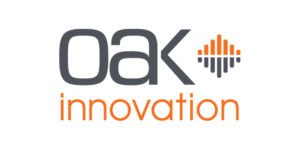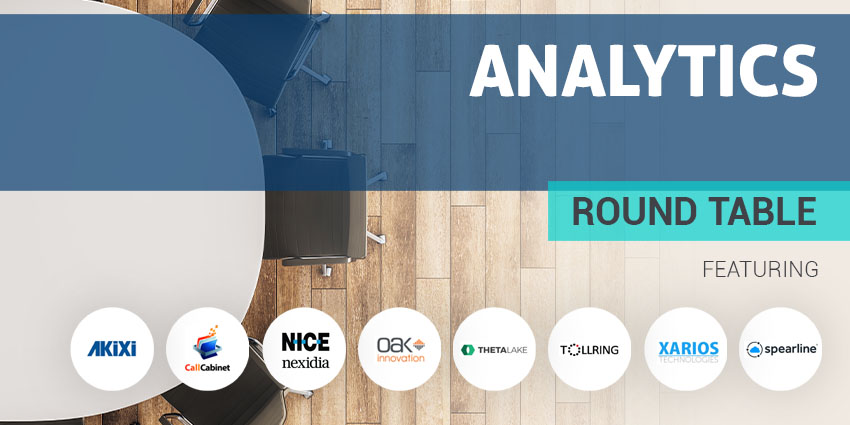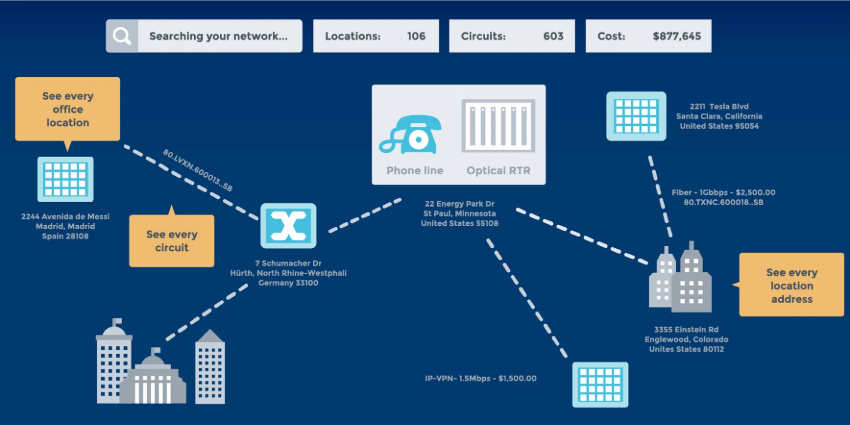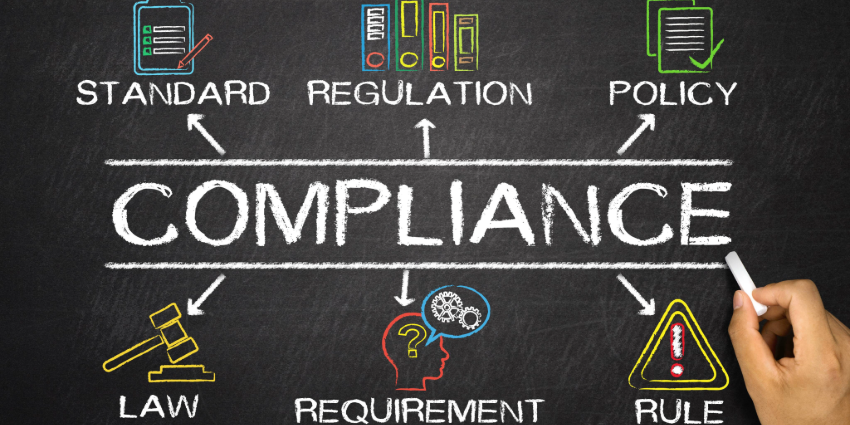Today, data is the key to your company’s survival.
The more data you have, the more you know about your customers, policies, procedures, and business. Insights from the past can even help us to predict the future.
The only problem?
The sheer volume of data that we’re working with today would be impossible to leverage without help. Studies say we’re producing 2.5 quintillion bytes of data every day. Analytics are how we transform meaningless streams of information into valuable actions.
Analytical tools, delivered in the form of AI-enhanced systems, machine learning, and automated tools, take call management and conversations to the next level. As the world continues to digitally transform, these systems will become all the more essential to our growth.
So, where is the analytics landscape heading, and what do we need to know about it? We spoke to leaders from around the world to find out. Here are the latest insights from Akixi, Call Cabinet, NICE-Nexidia, Oak Innovation, Theta Lake, Tollring, Xarios and Spearline.
In relation to Analytics & Recording, what are the biggest challenges faced by business today?
Analytics are crucial to the success of today’s businesses. However, unlocking the power of analytical tools isn’t always easy. While adoption rates for insightful tools are growing, companies still have trouble figuring out where to get started.
With so many analytical systems to choose from, it’s difficult to decide whether you should be pursuing speech analytics, call recording systems, sentiment analysis, or something else entirely. Combine that with the concerns that teams have about GDPR and data compliance, and there are several hurdles to overcome. Here’s what our experts had to say about the challenges that today’s teams are facing:
 Colin Gill, Head of Product and Solutions at Akixi:
Colin Gill, Head of Product and Solutions at Akixi:
Akixi’s Colin Gill told us that some of the biggest challenges businesses face today are analysis paralysis and figuring out which data to draw insights from. There are huge amounts of data available for companies to tap into today. When you have the option to draw information from every aspect of calls, speech, and recordings, it’s easy to get overwhelmed.
“It can be a challenge identifying, from the massive lakes of data generated, what information is useful, and what information can be used to form valuable insights”
Business leaders need to know how to pinpoint the data that will help them to make crucial decisions about the future of their company. “A blanket analysis of all data is not necessarily a good thing and can turn out to be damaging to a business”
Ryan Kahan, CEO at CallCabinet:
Ryan Kahan told us that response speed and accuracy are the biggest challenges in analytics today. Companies have long relied on a random sampling approach to understand customer journeys or reactive approaches to resolving disputes.
“This approach leaves a torrent of business-critical intelligence left unanalysed. Hidden in a company’s voice data is the vital insight that answers the questions every business has.”
Kahan noted that today’s companies need to think about what their customers’ challenges are, whether clients are happy with their service, and what trends are emerging. Companies also need to consider where opportunities exist to build a happier customer base.”
“In today’s business environment, the ability to leverage the voice of every customer into actionable insights allows businesses the speed, and accuracy they need to respond and transform their employee training, research and development, marketing programs, and more into a finely tuned machine that meets the needs of their customers.”
 Jonathan Wax, VP of EMEA, and Ben Fuggles, Account Director at NICE-Nexidia:
Jonathan Wax, VP of EMEA, and Ben Fuggles, Account Director at NICE-Nexidia:
Jonathan Wax and Ben Fuggles for NICE-Nexidia, both responded to this question. They told us that businesses are currently struggling to keep up with customer expectations. Now, COVID-19 has exacerbated the issue, forcing companies to adapt quickly.
“A critical first step to meet customer’s expectations is using traditional interaction analytics to analyse 100% of your customer interactions, but still customer expectations continue to rise. This creates a chasm between the typical metrics that businesses monitor, and what consumers truly expect.”
Ben and Jonathan told us that businesses often focus on things like Average Handle Time when customers are actually more concerned with receiving satisfactory service. In this situation, because speed is the focus for teams, reps feel rushed to conclude an interaction. This often mean that personalised and thoughtful experiences are sacrificed. “The cost impact of customer churn is often significantly higher than the cost savings from a generalized focus on AHT.”
Ian Bevington, Marketing Manager at Oak Innovation:
Oak Innovations Ian Bevington, told us that most companies base buying decisions on one of 3 key drivers. These are protecting reputation, managing resources effectively, and improving customer experience. Recently, Oak Innovation has observed some changes in behaviour in its customers, for instance:
“With more commerce moving online, any opportunity to speak with customers and build a relationship is highly valued. Simple quantitative measures alone often discourage customer engagement resulting in a poor customer loyalty”
Additionally, while most businesses manage formal contact centre operations properly, they forget about informal touchpoints. This is often crucial for multi-tasking knowledge workers who don’t always prioritise customer experience.
Another trend is that transitioning to distributed teams is presenting new challenges to the workplace, particularly when SLAs and compliance commitments are concerned. Managers need the right tools to manage their remote workers correctly and remain compliant with ever-increasing demands.
 Devin Redmond, CEO, and Co-Founder at Theta Lake:
Devin Redmond, CEO, and Co-Founder at Theta Lake:
Theta Lake’s Devin Redmond said that finding compliance risks and risky behavior in calls is a major challenge for businesses. Companies need to go beyond just using key terms to identify signals for service improvement.
“In a world where call volumes across call centers and collaboration tools have become the dominate communication norm, the risks of abuse, data exposure, and compliance violations is set to spike”
Theta Lake believes that context, intent, and relevance in analysing calls are crucial to reducing risks. Trying to rely on transcription with lexicon-heavy search tools could create too many false results. On the other hand, bespoke analytics and ML tools are often too slow and rigid to access in a reasonable timeframe. “Balancing time-to-value, ability to reduce risk, and reducing the cost of risk and compliance management using analytics for calls will be the challenge of the next few years.”
Tony Martino, CEO at Tollring:
For Tony Martino, the challenge right now is delivering consistently good customer experience. CX drives customer satisfaction and is essential in every touchpoint in the customer journey. CX is now a priority for businesses, and essential for differentiation. However, it’s often difficult to know where to start.
“The uncertain economic times of COVID-19 have increased the CX challenge further, through forced remote working. Maintaining CX and managing service levels require continuous monitoring of internal performance and business KPIs as the business changes”
Martino also notes that it’s critical to understand the changes that must be made to emerge from our current crisis as a stronger business. “Making the right decisions at the right times requires analytics to be used across all departments and touchpoints, not just the contact centre.”
 Robin Russell, Managing Director at Xarios:
Robin Russell, Managing Director at Xarios:
Robin Russell said that businesses are being bombarded with statistical information. Companies are trying to use this information to benchmark their own business performance. For instance, telephone calls are often a crucial medium for customer communication.
Companies want to discover how, using their own traffic, they can obtain information that helps them to improve call quality, handling, and customer satisfaction.
“In a post-COVID-19 era where remote working teams become the norm, it will become even more paramount to have visibility and information on call traffic and the ability to monitor each user’s performance and compliance”
For Xarios, the key challenge here is how to conduct this analysis without having to deploy additional management. Existing managers need to be able to monitor more employees, without compromising on the quality of collected data.
Josh O’Farrell, Technical Content Writer at Spearline
Spearline’s Josh O’Farrell told us that effectiveness of technology investments in areas such as call analytics is heavily dependent on the quality of phone connections to ensure customer satisfaction, and that whilst the omnichannel approach has emerged seamlessly to leverage multiple communication channels, voice remains dominant.
“Early stages of analytics software, has generally involved processing thousands of hours of recorded calls in a matter of minutes but now we have seen the emergence of predictive analytics.”
He goes on to say one of the challenges of incorporating the complex nature of analytics intelligence in real-time can be a costly investment.
“With constant data being shared now more than ever, organizations will now need to adopt faster communication tools instead of standard metrics such as hold/call time, and fixed rate. The challenge is now how can organizations stay on top of big data and ensure it’s operationalized. Another challenge for organizations is how expensive integrating speech analytic tools with predictive analytics will be.”
How can Analytics & Recording address these challenges?
It’s no secret that we’re living in a complicated environment right now. The demand for better customer service is growing, and companies are under more pressure than ever. All the while, astronomical changes in the global landscape are forcing us all to evolve at an incredible pace.
While companies need to figure out how to properly leverage their analytics solutions to get the best results, analytics can also help to solve problems. Used correctly, the right data offers companies a
way to get ahead of market trends and respond to changing expectations. We asked our experts how call analytics, recording, and speech analytics can help businesses to solve current problems.

Head of Product and Solutions at Akixi, Colin Gill, told us that when it comes to figuring out which and how much data to analyse, companies need to have set goals. It’s important to figure out what you want to get the answer to.
“Wading through a stack of endless generic reports, trying to find meaningful insights, or hoping you’ll happen across nuggets of quality information, will result in analysis paralysis and a is a complete waste of time. Even worse, could result in business decisions being made from irrelevant data.”
Information and insights from data, according to Colin, need to be used as a precision tool for addressing specific problems. This could mean using data to find out when and why calls are lost. It could even mean identifying problems that you didn’t know you had. “In short, start at the finish. Begin with knowing what questions you want answering, and work backwards from there, identifying what data will give you the answers to those questions.”
CEO for CallCabinet, Ryan Kahan told us that AI-driven analytics solve a variety of problems by allowing people to search through huge amounts of call data. “Our view of modern analytics is that it unchains companies from the random sampling method because AI organizes your call data into structured, searchable data. Keyword and key phrase detection deliver the rapid identification of issues. Emotive analysis quickly reveals call sentiment, per call, or across any given call volume.”
Kahan told us that CallCabinet encourages businesses using AI analytics to use custom vocabulary in their AI platform. This increases company-specific data touchpoints. What’s more, the power of machine learning can be transformative too. With ML, you can train your analytics AI to listen for industry terms and specific phrases.
“AI analytics target and deliver an endless number of vital data points instantly based on a business’s specific needs versus a time consuming, manual search through a trove of individual calls”

Ben Fuggles and Jonathan Wax from NICE-Nexidia told us that businesses must rethink the way they’re using their analytics programs. If organisations only have quality monitoring tools, these programs need to be analytics-driven, and monitor 100% of interactions.
Current analytics programs need to be omnichannel, and capable of analysing every voice, text, and digital channel when interacting with customers. Many analytics applications will need to rely on AI to answer problems affecting customer satisfaction.
“AI technology can do what humans cannot – it can consistently measure subjective behaviours with no bias, revolutionizing how managers and representatives communicate both internally and with customers.”
The best programs can spend more time developing the right coaching solutions, rather than using inefficient and subjective random sampling. AI tools can also more efficiently monitor business trends and KPIs.
Ian Bevington of Oak Innovations told us that call recording helps frontline staff to take ownership over the quality of conversations. Quality management tools allow calls to be evaluated, and problem areas are easy to identify and address. Best practice calls can even become playlists for training across frontline teams and new arrivals.
“By providing all frontline staff with live wallboards and dashboards, busy multi-tasking staff are better able to make ‘in the moment decisions, prioritize activity and manage customer experience more effectively.”
Analytics, recording, and other tools provide managers with a complete view of their interactions. This enables the better management of resources, and solutions to protect brand reputation.
“As a minimum, call recording solutions should make it easy to find and delate all recordings associated with an individual, as well as report on administration activity. Recently, we’ve seen an upturn in users enquiring about CRM integration in order to simplify the management of data. Oak’s latest Clarify release addresses this requirement by making it easier to integrate recording.”

According to Devin Redmond of Theta Lake, call analytics systems can address the challenges of determining compliance, security, and data risks. The key to success is focusing on easy-to-implement and maintain systems that cover multiple channels. Analytics need to address voice, text, and visual content across a phone or video call.
Redmond told us that the systems need to be a layer above transcription tools. With built-in risk detections, and NLP, the analytics layer is less likely to deliver false results. “That is key to overcoming the cost and challenges of compliance while enabling new business initiatives.”
Devin notes that tools that offer detection abilities along with options to train analytic behavior and provide integrations into existing tools give organisations better immediate and long-term returns.
Tollring’s Tony Martino told us that best-practice CX demands a consistent process of monitoring, analysing, and taking action to address challenges.
Call recording and analytics provide scientific metrics and analysis for making improvements to business operations. However, the information available needs to be accessible, easy to understand, and compliant. “It is important that critical business observations are shared with the right people at the right time.”
Tony told us that businesses need to examine internal and external interactions using CX KPIs. This means focusing on things like first contact resolution, caller tolerance, quality of conversations, and so on.
“Businesses need to go beyond fixing internal performance efficiencies. They need to determine the key levers that can be pulled to achieve strong CX. In practice, the most frequently taken customer journeys need to be identified, assessed, and potential process improvements tested.”

According to Xarios’ Robin Russel, call analytics can provide detailed information on things like how long customers spend trying to get a response, and how long calls last. This information alone is paramount in judging how many staff are necessary to deliver a good experience.
“Using specific metrics for marketing campaigns can show how effective they are at attracting business. More advanced is the use of speech analytics, whether this is for ensuring certain key phrases are used by your agents, or profanity detection in certain environments.”
According to Russel, taking this a step further involves using sentimentality analytics on the calls. This provides information on how content or stressed an agent or customer feels. All of this information helps the business to tailor the right customer journey to improve CX.
Josh O’Farrell tells us that due to businesses growing their e-commerce / online business, the voice conversation is the most engaging contact between organisations and their customer.
“The technologies above provide feedback to support process control and process improvement. They are instrumental in verifying and building trust in new applications and methods such as the deployment of voice bots as front-line service interfaces; helping to ensure these are working correctly and improving customer experience.”
Whilst maintaining high levels of consistency and process control, these technologies combine to ensure the business can scale alongside. “Critically, that consistency can have strong elements of real customer feedback where call analytics are employed, and agent handling scripts, etc. can be finely tuned over time and respond to changes in consumer needs and wants. “
How can AI positively impact Analytics & Recording and businesses employing the technology?
It’s impossible to deny the incredible impact that artificial intelligence has had on communication. AI and machine learning brings new levels to the way that we connect. Whether it’s virtual assistants helping us to access information in an instant, or AI analysing sentiment in a conversation.
In the call recording, analytics, and speech analytics environment, AI has an essential role to play. Artificial Intelligence can collect and process data much faster and more accurately than humans. This means that collecting information and leveraging your data is much easier. As the amount of data that companies create increases, the need for AI will accelerate. Here’s what our experts had to say about the impact of AI in this environment.
Colin Gill of Akixi said that the advantage of AI is significant in the analytics and call recording world. With AI, companies can compile information for in-depth analysis. Additionally, it’s easier for AI systems to pull insights directly from the raw data lakes that companies create.
As businesses continue to generate huge amounts of data in all environments, from phone calls, to online conversations and SMS messages, it would be impossible to sort through this information manually. AI can sort through huge volumes of content in a fraction of the time it would take a human. “This makes the process quicker, but also removing any subjectivity or misinterpretation that can be applied when manually interpreting to data.”

Ryan Kahan told us that customers are the heartbeat of every organisation. AI monitors the pulse of the business, by delivering actionable insights. The flexibility of artificial intelligence means that businesses can instantly deliver new training opportunities and tighten call times when necessary.
Trainable tools are a “paradigm shift” for contact centres, according to Ryan, particularly when it comes to speech analytics. Beyond improving SLAs, it’s possible to enhance sales opportunities, marketing programs, and more.
“The agility of AI is all-encompassing in its list of benefits. Search and detection efforts are instantaneous, and new behaviors can be easily imparted within minutes. As changes occur in a customer base, AI allows a company to proactively pivot and drive operational change during the transition.”
Kahan told us that AI and analytics brings to mind the “finding a needle in a haystack cliché” for him: “How do you know if there is only one needle in this haystack? AI-driven speech analytics will
actually tell you there are 20 needles in this haystack and hand you each needle. It is a game-changer for business and truly allows them to unlock the hidden potential in their voice data.”

Nexidia’s Ben Fuggles and Jonathan Wax told us that as contact centre analytics programs ingest more data from different systems and channels each year, AI is essential. The rise of new channels, and the increasing demands of customers would be impossible to navigate alone.
“Traditional analytics is excellent for determining certain discrete events such as processes, product, and some behaviours. AI and machine learning can provide answers that no amount of manual listening or query building could determine”
When built properly, AI can connect customer journeys over time, and build a stronger understanding of whether the journeys are positive or negative. AI can understand customer sentiment for each interaction and determine whether representatives are displaying enough empathy. “AI can side-step the traditional methods of query building and surface topics by volume and sentiment together, effectively guiding analysts to where they should focus priorities next.”

Oak Innovation’s Marketing Manager, Ian Bevington, told us that speech analytics is becoming increasingly accessible to businesses of all sizes. It has an essential part to play in managing customer experience and compliance, with phrases that can be automatically identified and flagged.
According to Bevington, “Our software has a built-in health monitor that automatically notifies any concerns or failures. This is especially important when recording for compliance purposes. A failure my not be immediately apparent but have serious consequences.”
Bevington also told us that it’s important to think beyond AI, to integrations and deployment models, when using analytics and reporting. Pure software solutions that can be implemented in any environment are essential in this ever-evolving landscape.
“We offer multi-site and resilient options for business-critical requirements. We offer a standard (SMDR matching) integration, as well as an advanced real-time (CTI/TAPI) integration for specific telephony platforms or a SIP Extension integration for hosted telephony. All of this means the customer can begin with a cost-effective solution and carry their investment forward.”
Devin Redmond told us that AI integrated into an analytics platform can be immensely powerful. AI in the right environment reduces manual tasks and allows valuable human resources to focus on the things they do best. This even means using human judgement to deal with subjective situations.
Redmond noted that AI in a risk and compliance analytics context might reduce review time and efforts by surfacing common items of interest. This would give the reviewer the information they needed automatically, and in context, to make it easier to get to the crux of the matter faster. The AI system can also provide feedback from the reviewer on the detection to continually improve accuracy. “That saves time while reducing risk.”
Devin also told us: “Third, that AI can even learn typical actions and reactions taken by the reviewer to reduce the number of steps they have to take by 50% or more. When used that way, AI can save cost and resource while increasing scale and improving compliance management.”

Tollring’s Tony Martino agreed that AI has a massive impact on call analytics, recording, and voice analytics. He noted that a big challenge dealing with any type of data, is knowing how to turn large volumes of information into actionable insights.
“Few businesses in the mid-market have a dedicated CX champion, or indeed dedicated analysts, so a key application of AI is to ease that load”
“AI can take raw data and make it easily digestible and actionable by people for whom this is only one facet of their job.”
Martino acknowledged that Tollring is focusing on delivering customer experience modelling with AI technology. This means unlocking the ability to take a change in a business environment and understand it impacts. For instance, you may look at the impact of bringing on a new customer, or a change in contractual service level obligation. With analytics, you can see the impact on call volumes, staffing, and internal performance.
“Modelling these changes using historical data and performance metrics is a powerful example of how AI/machine learning delivers insights into a business’ changing and evolving needs. It ultimately provide the level of customer experience needed today.”
Managing Director for Xarios, Robin Russell, told us that while call analytics and recording tools provide the information that businesses need, they’re limited on their own. These tools can help businesses monitor performance indicators in telephone communications. However, it would take a lot of time to monitor that information and react to it.
“When applied correctly, artificial intelligence can be used to automate the monitoring of communication channels, giving immediate feedback to users on performance and making comparisons to historical trends can make pre-emptive changes to handle variable traffic.”
According to Robin, since the key target for many companies is to maximize the number of users that a single supervisor can support, be reactive, or predict more traffic changes, AI can help companies achieve their goals. With AI, it’s easier to address trends, predict changes in the landscape, and improve performance immediately, rather than waiting to learn from long-term data.

Josh O’Farrell tells us that AI has great potential and the capacity and power to rapidly work through “big data” accumulations to connect the dots between the key technologies.
“For example, AI can scan call analytics inputs and dynamically alter agent scripts, offer agents prompts, or an agent whisper in response to sentiment changes.”
O’Farrell told us that infrastructure monitoring can be assisted with artificial intelligence so that telecoms and core systems uptime is maximised so that greater sophistication is brought into call routing or agent routing.
“Service bots are evolving into conversation-bots / voice-bots which can enhance the customer experience if done right.
The impacts of business will be looking for, include: Reduced costs, increased availability time, identification of issues in real-time, conversational bots which move lower complexity service requirements to a low-cost point and routing of calls to the required endpoint faster than traditional IVR.”
What did you think of our round table on call analytics, call recording, and voice analytics? Did you agree with the opinions of our thought leaders, or do you have your own insights to provide? Share your comments in the section below, or join the conversation with us on social media.







